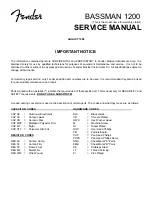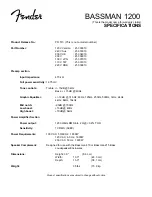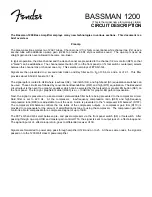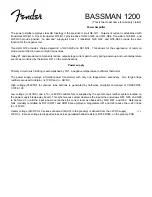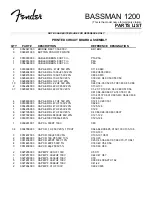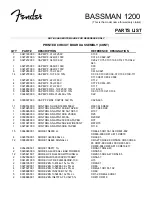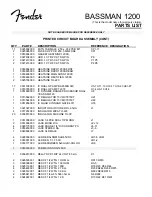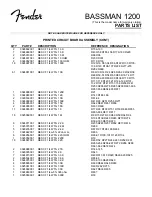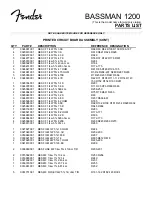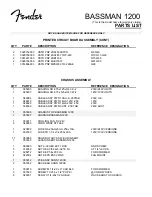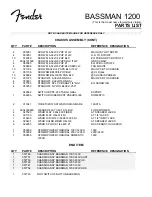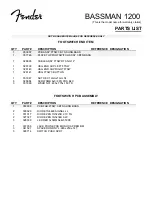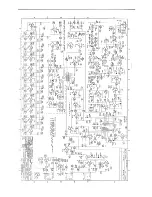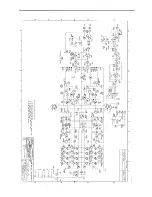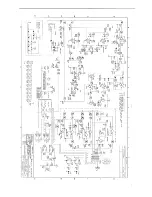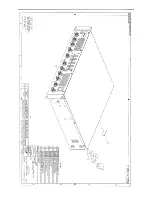
BASSMAN 1200
(This is the model name for warranty claims)
CIRCUIT DESCRIPTION
The Bassman 1200 Bass Amplifier employs many new technologies in various sections. This document is a
brief overview.
Preamp
The preamp section employs two 12AX7 tubes. Channel one (V1) is fairly conventional, while channel two (V2) uses a
second tube with additional op-amp gain (U2B) to provide a 60's style overdrive sound. The op-amp is used as
straight gain and is never allowed to become non-linear.
In typical operation, the drive channel and the clean channel are presented to the channel 1/2 mix control (R25) so that
a "blend" can be established. The channel select button (S7) on the front panel (or it's foot switch counterpart) selects
between this channel mix or channel one only. This selection employs JFETS Q1-Q4.
Signals are then presented to a second-order Sallen and Key filter set to F0 of 36.6 Hz and a Q of 2.1. This filter
provides about 6.5dB of boost at 41 Hz.
The signal path is routed to U4B where low-boost (S2) , mid-notch (S4), and high-boost (S3) equalization switches can
be used. These circuits are followed by conventional Baxendall low (R67) and high (R70) equalization. The Baxendall
circuit output is then sent to a graphic equalizer which can be selected by the footswitch or graphic EQ button (S61) on
the front panel. The far-right graphic EQ slider (R660) is a +/- 10dB trim for graphic EQ gain compensation.
Next, the signal is presented to a second-order state-variable filter before being presented to the compressor circuit.
Said filter is set to 420 Hz. At the compressor, low-frequency compression ratio (R88) and high-frequency
compression ratio (R98) are adjustable to suit the user. Audio is presented to the "compressor EQ balance" (R107).
The compressor EQ balance controls the mix ratios of the compressor outputs. A compressor gain trim (R113) is
provided to compensate for the amount of amplification lost due to using the compressor. The compressor-gain trim
control is able to compensate for a compressed signal of up to 10dB.
The FETs Q5 and Q6 select between pre- and post-compressor via the front panel switch (S8) or footswitch. After
passing through op-amp U10B and master-gain control R116, the signal is sent to output jack J3, effects-loop send.
The signal input at J4, effects-loop return, goes to differential receiver U11B.
Signals are forwarded to power amp pass through amplifier U12B and on to J5. At these same nodes, the signal is
passed on to the 1200 Watt class H power amplifier.


